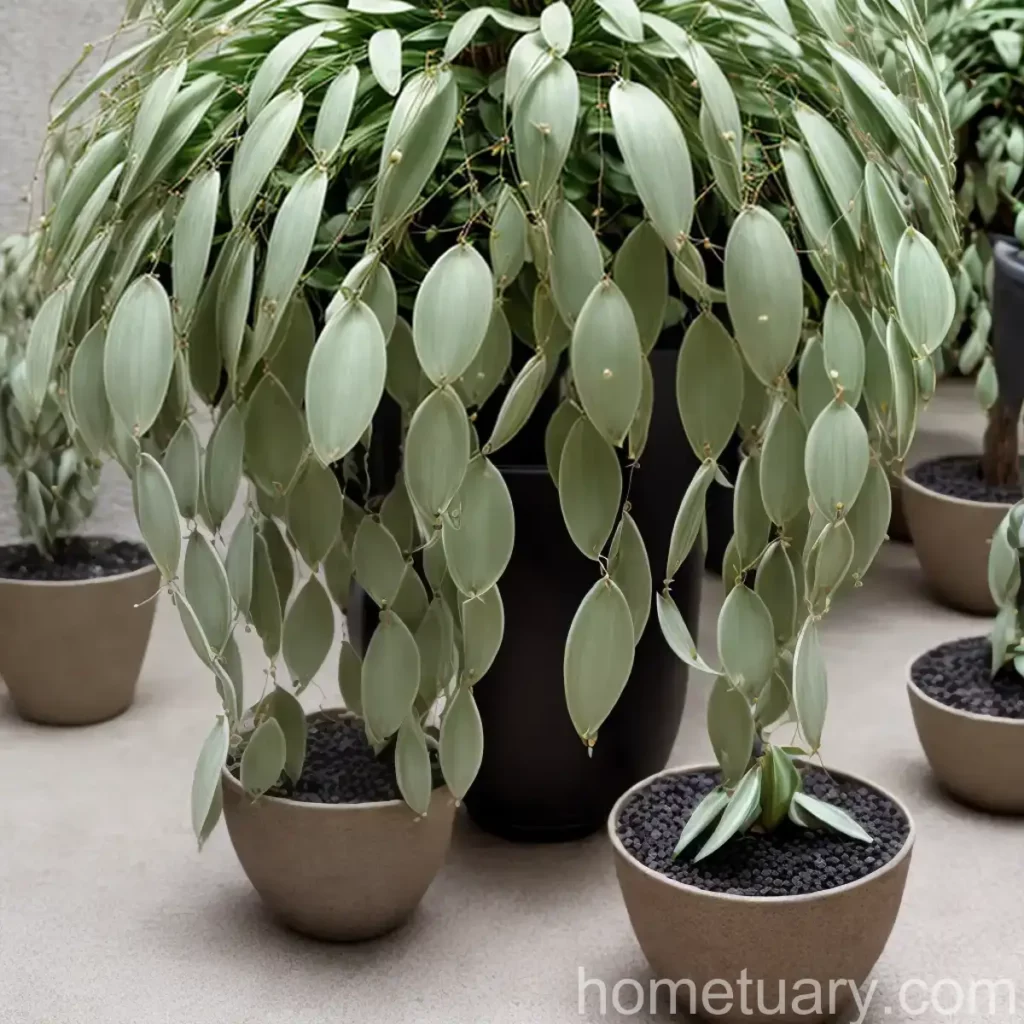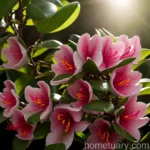Rhipsalis Elliptica: A Fascinating Trailing Succulent
What is Rhipsalis Elliptica?
Rhipsalis Elliptica, also known as the elliptical cactus or the mistletoe cactus, is a unique and intriguing plant characterized by its trailing, cascading stems and tiny white flowers. It belongs to the family Cactaceae and is native to the rainforests of Central and South America, as well as the Caribbean. Unlike traditional cacti, Rhipsalis Elliptica is epiphytic, meaning it grows on other plants, usually trees, without being parasitic. This plant is a great choice for indoor gardening enthusiasts, as it thrives in hanging baskets and can be a striking addition to any living space.
Key Takeaways – Rhipsalis Elliptica
Before delving into the specifics of caring for Rhipsalis Elliptica, let’s take a quick look at the key takeaways that we’ll be exploring in this comprehensive guide:
- Rhipsalis Elliptica is a trailing succulent plant with delicate, elongated stems and small, white flowers.
- It is an epiphytic cactus, native to the rainforests of Central and South America.
- This plant is suitable for indoor cultivation and looks spectacular in hanging baskets.
- Rhipsalis Elliptica requires minimal maintenance and is relatively easy to care for, making it an excellent choice for both novice and experienced gardeners.
Now that we have a general overview, let’s delve into the details of caring for Rhipsalis Elliptica.
Culture
Uses
Rhipsalis Elliptica is primarily cultivated for ornamental purposes. Its unique appearance and low maintenance requirements make it popular for indoor and office environments. The trailing stems create an elegant and eye-catching display, particularly when grown in hanging baskets or placed on high shelves.
Water
Proper watering is crucial for the health of Rhipsalis Elliptica. Like many succulents, it is essential to avoid overwatering, as this can lead to root rot. The key is to allow the soil to dry out slightly between waterings, as the plant is adapted to periods of drought in its natural habitat.
Sunlight
Rhipsalis Elliptica thrives in bright, indirect light. While it can tolerate some morning or evening sun, it should be protected from intense midday sunlight, as this can scorch the delicate stems. Placing the plant near a north or east-facing window is ideal, or using a sheer curtain to filter direct sunlight if placed near a brighter window.
Fertilizer
During the growing season, which typically spans the spring and summer months, it’s beneficial to fertilize Rhipsalis Elliptica with a balanced, diluted, liquid fertilizer every 2-4 weeks. However, it is essential to refrain from fertilizing during the plant’s dormancy period, which occurs in the fall and winter.
Soil
A well-draining soil mix is essential for Rhipsalis Elliptica. A combination of peat moss, perlite, and coarse sand creates an ideal medium for this plant. Additionally, perlite aids in aeration and prevents waterlogging, which is crucial for succulents like Rhipsalis Elliptica.
Pruning
Rhipsalis Elliptica typically requires minimal pruning. However, occasional trimming of straggly or damaged stems can help promote a more compact and bushy growth habit. When pruning, it’s advisable to use clean, sharp shears to prevent unnecessary damage to the plant.
Propagation
The propagation of Rhipsalis Elliptica is predominantly achieved through stem cuttings. This can be done by carefully removing healthy stems from the parent plant and allowing the cut ends to callus before placing them in a suitable potting mix. It’s important to keep the cuttings slightly moist while they establish roots, which typically occurs within a few weeks.
Container
When selecting a container for Rhipsalis Elliptica, opt for a pot with drainage holes to prevent water accumulation at the roots. Additionally, choosing a hanging basket can provide an aesthetically pleasing and practical way to showcase the trailing nature of this plant.
Popularity
Rhipsalis Elliptica has gained popularity among plant enthusiasts for several reasons. Its unique appearance, low maintenance requirements, and suitability for indoor cultivation make it an attractive choice for both novice and experienced gardeners. The aesthetic appeal of its cascading stems and delicate white flowers adds a touch of elegance to any indoor space, making it a sought-after addition to plant collections.
Common Diseases
Disease Diagnosis
Rhipsalis Elliptica is susceptible to certain diseases and issues that can hinder its growth and overall health. Common problems include fungal diseases, such as root rot and powdery mildew, as well as issues related to overwatering or inadequate airflow. It’s essential for plant owners to monitor their Rhipsalis Elliptica for signs of disease, including wilting, discoloration, or unusual spots on the stems or leaves.
Common Pests
Rhipsalis Elliptica can be vulnerable to pests such as spider mites and mealybugs. These tiny insects can infest the plant, causing damage to its stems and disrupting its growth. Regular inspection and prompt intervention are essential for preventing pest infestations and preserving the health of the plant.
Botanist’s Tips
Tip 1:
- Rhipsalis Elliptica appreciates consistent but moderate levels of humidity, making it well-suited for bathrooms or kitchens with higher moisture levels.
Tip 2:
- To discourage the development of fungal diseases, it’s advisable to water Rhipsalis Elliptica from the base of the plant and avoid wetting the stems and foliage unnecessarily.
Tip 3:
- Consider placing Rhipsalis Elliptica outdoors during suitable weather conditions, such as in a sheltered area with dappled sunlight, to provide it with a natural environment akin to its native rainforest habitat.
Fun Facts
- Rhipsalis Elliptica is known for its air-purifying properties, helping to improve indoor air quality by removing certain toxins and impurities.
- The plant’s trailing growth habit resembles that of a spider plant, creating a visually striking display, especially when grown alongside other cascading plants.
- In its natural habitat, Rhipsalis Elliptica can be found growing on tree branches and trunks, utilizing its epiphytic adaptation to thrive in a challenging environment.
Links to External Resources
For more information on Rhipsalis Elliptica and its care, you can explore the following resources:
- The Spruce – Rhipsalis Plant Profile
- Gardening Know How – Rhipsalis Care Guide
- The Sill – Rhipsalis Elliptica Care Guide
In conclusion, Rhipsalis Elliptica is a captivating and versatile plant that adds a touch of elegance and natural charm to any indoor space. With its unique trailing growth habit, minimal maintenance requirements, and air-purifying qualities, it is a wonderful addition to any plant collection. By adhering to the recommended care guidelines and providing the right growing conditions, plant enthusiasts can enjoy the beauty and benefits of Rhipsalis Elliptica in their homes or offices.
Now that we’ve explored the various aspects of caring for Rhipsalis Elliptica, it’s time to put this knowledge into practice and create a thriving environment for this fascinating trailing succulent. Remember to observe your plant regularly, adjust its care as needed, and enjoy the beauty it brings to your surroundings.
Thank you for joining us on this insightful journey into the world of Rhipsalis Elliptica. Happy gardening!















